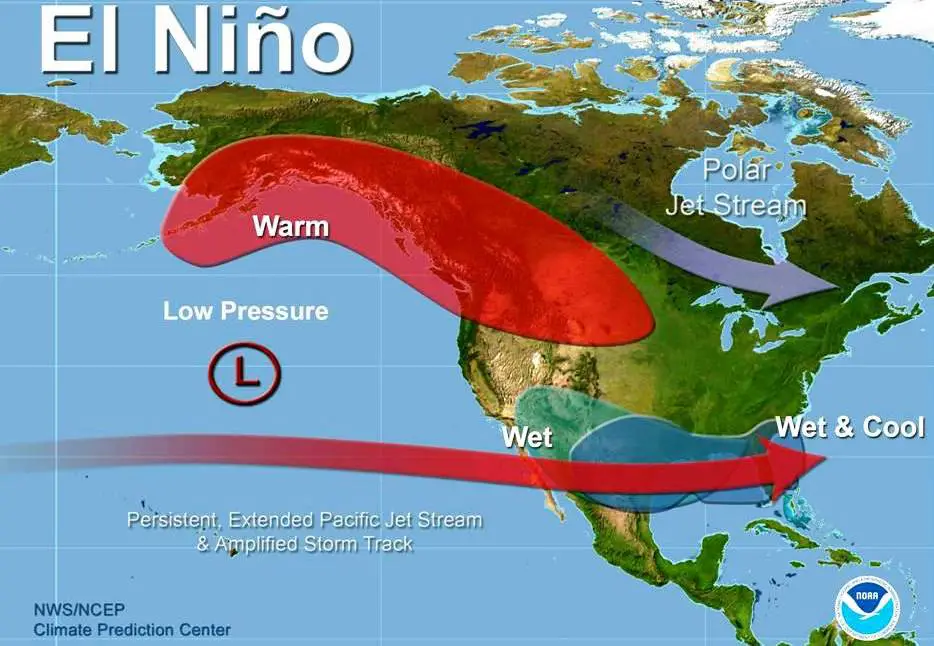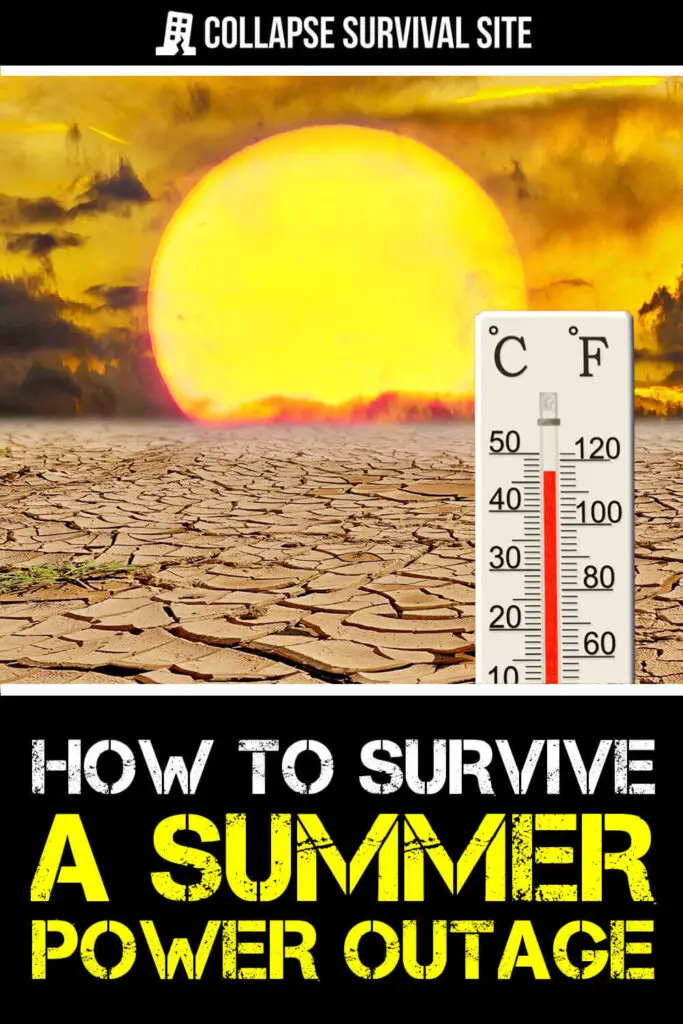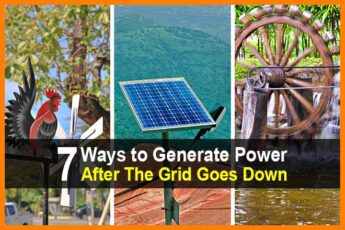Estimated reading time: 21 minutes
Most of us are familiar with the occasional power outage. They usually happen in summer as a result of thunderstorms and the duration is usually measured in hours. But if the last few years are any indication, all of that is changing.
An analysis from Climate Central, a nonprofit research group, reported that outages in the past 10 years had increased by 64% compared with the previous decade. And it only seems to be getting worse.

- The total number of major power outages in 2021 was 112% higher than the annual average between 2000 and 2021.
- Weather-related outages in 2021 were about 88% higher than the long-term average.
- Texas utilities reported 20 weather-related outages in 2019, 19 in 2020, and 41 in 2021. This three-year period accounts for 44% of Texas’s total weather-related outages since 2000.
- Severe or winter weather caused the majority of these outages (76%), followed by hurricanes (21%).
- Michigan’s highest-ranking year included in the analysis was 2021 with 14 major power outages— all attributed to severe weather.
- In California, utilities reported 44 outages between 2019 and 2021.
Want to save this post for later? Click Here to Pin It On Pinterest!
The Reason for the Spike in Outages
Some of the usual suspects have led to this increase in power outages. The aging power infrastructure in the U.S. is always an issue. The fundamental problem with the U.S. power grid was defined by Kaitlyn Trudeau, a data analyst with Climate Central:
“The system we have right now was not built in a time and climate we’re experiencing now. It is not prepared for the climate that we have now, and the climate we’re going to see in the future.”
Unfortunately, that climate we’re going to see in the future is not promising. Using federal data provided by utility companies and the North American Electric Reliability Corp., researchers found more than 1,500 cases of extreme weather-related power outages since 2000, including those caused by high wind; heavy rain and thunderstorms; winter weather, including snow, ice and freezing rain; hurricanes; extreme heat and wildfires.
Climate researchers have noted many of these phenomena are becoming more intense and more frequent as global temperatures rise. In other words, “climate change.” But there’s another factor looming over this summer.
El Nińo

El Niño means Little Boy in Spanish. South American fishermen first noticed periods of unusually warm water in the Pacific Ocean in the 1600s. The full name they used was El Niño de Navidad, because El Niño typically peaks around December.
El Niño can affect our weather significantly. The warmer waters cause the Pacific jet stream to move south of its neutral position. With this shift, areas in the northern U.S. and Canada are dryer and warmer than usual. But in the U.S. Gulf Coast and Southeast, these periods are wetter than usual and have increased flooding.
This year we are entering an El Nino phase. The result will be more intense storms in the U.S. going into this summer. After the storms of 2022, this year is simply going to be more severe.
And of Course it Gets Worse
Some climatologists believe that this year has the potential for a “super” El Nino. The most common effect of a super El Nino is higher temperatures. What’s emerging is a perfect storm of events that could make this summer one for the record books.
The combination of increased storm intensity and occurrence, plus an aging and antiquated power grid could leave many without power at a time when record temperatures will be soaring.
Another Tipping Point is Coming
There is a meteorological term that defines the effect of combined heat and humidity. It’s measured as something called “wet bulb temperature.” It’s a measure of how the human body responds (and fails to respond) to a combination of heat and humidity above certain measures.
The “wet bulb” expression is from the effect of a wet piece of fabric applied over the bulb of a thermometer. Wet-bulb temperature (WBT) combines dry air temperature (as you’d see on a thermometer) with humidity – in essence, it is a measure of heat-stress conditions on humans. The (wet-bulb) temperature reading you get will actually change depending on how humid it is.
The significant effect is that there is a specific threshold when a combination of temperature and humidity overwhelms our ability to keep our bodies cool.
Perspiration or sweat is our first line of defense against heat. When the temperature is 95 degrees F. or above, and the humidity is 75% or higher the risk is significant and potentially deadly.
Humans usually regulate their internal body temperature by sweating, but above the wet-bulb temperature, we can no longer cool down this way, leading our body temperature to rise steadily. This essentially marks a limit to human adaptability to extreme heat – if we cannot escape the conditions, our body’s core can rise beyond the survivable range and organs can start failing.
The Usual Solution…
Air conditioning. That’s the modern solution we’ve developed to deal with high temperatures, especially when temperature and humidity levels start to rise. And that’s where this summer’s challenges become severe.
As more and more communities start to rely on air-conditioning the stress on the grid increases. One reason why California suffered blackouts in 2021 is that their grid couldn’t handle the power demand from the widespread use of air conditioners.
And that’s where the perfect storm starts to come into play. The combination of a super El Nino with higher temperatures and humidity resulting in increased use of air-conditioning all threatened by the increasing intensity of storms and outages are inevitable.
Worse than the inevitable power outages they will become both common and their average durations will increase. It will no longer be a matter of hours with a power outage but days and even weeks.
According to a study by the AP after super storm Sandy, 95 percent of utility customers who lost power in New York had it restored within 13 days—11 days for New Jersey. Following Katrina in 2005, it took utilities 23 days to restore electricity to just 75 percent of the power-out population in Louisiana.
Enough Said
There’s more evidence and reasons to be concerned about power outages this summer, but let’s get down to planning and preparations to survive what is shaping up to be a very dangerous summer. How much time and money you invest is proportional to your finances and level of concern. As a result, we’re going to explore 3 levels of preparation.
- Basic Preparations
- Advanced Preparations
- Serious Preparations
If you wanted to stage your preparations you could start with some basic preps and move into the deeper levels as your time and finances allow. On a fundamental preparedness level, everyone should at least take steps to do the basic preps. The investment is relatively small and most of the advice falls in the category of common sense.
These levels also align with power outage durations. Some are measured in hours, some in days and some in weeks or more. How prepared you need to be is always proportional to the duration of any event.
1. Basic Preparations (2 to 6 hour outage)
This is the kind of stuff we all need to get through the most common power outages. They typically are measured in hours and the immediate needs are for basic things like flashlights, a small generator or to run a sump pump or refrigerator/freezer, and other items that will get you through a few hours without power.
Put together a power outage kit
This is a collection of items that will help you get through the immediate needs from a power outage. To make it easy, think of it as your basic 72-kit recommended by FEMA. You’re not bugging out (although you might), but any time at home without electricity is going to be a lot like camping.
Obvious items include flashlights (one for everyone), extra batteries, and other items like candles, matches, tarps and simple things for immediate needs.
Buy a small generator
Small generators produce 1,000 to 3,000 watts of power. Most run on gasoline and can power basic things like a sump pump, refrigerator and a few lamps. It’s a bit of a luxury but it will prevent a flooded basement or food spoilage in the fridge even during an outage measured in hours. It’s also reassuring to kids if there are a few lamps on in the house.
Make sure you follow fundamental safety guidelines with any fuel powered generator. Keep them at least 15 feet from your house and away from any windows or vents that could draw in carbon-monoxide. Also, use an 8-gauge or 10-gauge extension cord to run the power to your house. It makes sense to have extra gas in storage to keep it running but most will run for at least 6-hours on a single fill-up.
Buy a solar power bank
Solar power banks aren’t expensive. They run around 20 to 30 bucks. They recharge with the sun and can recharge cell phones and pad devices. Many of them also have built in flashlights. If you don’t get around to buying a solar power bank, don’t forget that most vehicles these days have a USB port for recharging electronics. Speaking of vehicles…
Keep your vehicle gassed up
A lot of us run our cars and trucks down to a quarter tank before we think about a refill. When the weather is threatening, top off the tank. If the power is out for any length of time it’s possible local gas stations won’t be able to pump gas.
Store some water
On a basic level it’s wise to have about 5 to 10-gallons of water in storage. Each person in your family requires about a gallon a day just for drinking water. 5 to 10-gallons for drinking and cooking should get you through a long day with a power outage.
Hydration 101
It’s not just about storing drinking water. Stock up on some electrolyte powder that you can add to water to keep your family safely hydrated. Remind the kids to drink plenty of fluids and keep an eye on everyone for any symptoms of heat stroke. Also, make sure you are knowledgeable about how to treat all heat-related medical conditions.
Cook outside
This makes sense even when you have power, but when the power’s out you don’t need to add excess heat to your home in summer. Make sure you have charcoal or LP gas on hand to power your grill and try to cook everything outside. In a pinch, build a fire if you can and cook like a pioneer.
Disposable dishes and cutlery
You could always stack the dishes in the sink and wait until the power comes back on, but just in case it doesn’t you might want to use paper plates and utensils for meals. It’s not a big deal but it’s one less thing to worry about while you wait for the lights to go on.
Remember Grey Water
Grey water is water that has been previously used. Make sure you save it if you can. When it’s time to flush a toilet and the power is out you can fill the toilet tank with most any kind of unfiltered, unpurified water and get a flush. You could also used stored drinking water if you have excess but if the outage continues you’ll miss that water.
Unplug appliances or install surge protectors
It’s always a relief when the lights go back on but there’s a hidden problem when the electricity suddenly returns. It’s a called a power surge. It’s literally a jolt of electricity surging power back into your house, light fixtures and appliances. This jolt of electricity can actually blow out a light bulb or burn out an electric motor in any appliance.
Unplug them, install surge suppressors or through the switches on your fuse box when the power goes out You can then slowly throw the switches in your fuse box back on and re-plug everything when the power returns.
Remember the basement
If you have a basement you’ve probably noticed that it’s always cooler down there. A power outage on a hot, summer day is a good time to spend some quality time in the basement.
Move a few camp chairs down there and maybe spend a little time organizing some shelves or that tool bench. You can also keep an eye on that sump pump. Speaking of sump pumps…
Buy a battery backup sump pump
They cost around $150 to $250 dollars and are worth it. All it takes is a few inches of water in the basement to cost thousands of dollars in damage, especially if it’s a finished basement.
A battery backup sump pump is connected to a 12-volt battery that automatically recharges when the power is on. During an outage, a traditional sump pump float will kick in the pump when the water level rises in the sump pit. They run for hours and can get you through a short-term outage during a heavy rain storm.
Learn some primitive cooling skills
Pioneers and native peoples learned a long time ago about how to stay cool when electricity was unknown. Here are some links to some excellent resources that cover various ways to stay cool without electricity.
Stock up on Dollar Store Solar Lights
These are those lights you see at the dollar store for your yard and garden.
Get a bunch from the Dollar Store or on Amazon. Put them in your yard to keep them recharged but when the power goes out, bring them inside at night and you’ll have all the light you need. You can pull off the lights from the stake in the ground and set them around the house at night, and return them outside for a recharge in the morning in case your outage goes past a few hours to the next day.
Improvise
There are some long-term and short-term solutions you can improvise to reduce the amount of heat affecting your home. You can combine any one of these to take down the temperature.
- Lightly tape aluminum foil on windows to reflect the sunlight and prevent it from entering your home and raising temperatures.
- Most homes have bedrooms on the 2nd floor where heat rises. Sleep on the first floor.
- In extreme heat, put mattresses on the floor where cool air pools.
- Close off the warmest rooms.
- This takes some preplanning but awnings over windows keeps you in the shade.
- Make heat blocking curtains from sheets, blankets or fabric.
- Insulate around doors and window. Use tape if that’s all you have. You want to keep the cool air in and the hot air out.
- Plant trees around your home to shade your roof.
- Improvise a solar powered air cooler.
- Dress for the weather.
- Cover your head outside or wear a wet bandana.
- Sleep outside.
2. Advanced Preparations (2 to 5 day outage)
Anyone who has endured a few days without power knows how quickly the novelty of living off-grid wears off when you’re unprepared. The biggest question is usually wondering when the power will come back on and answers from utilities are sometimes highly generalized.
It’s particularly difficult for anyone who has to return to work and leave the family behind. Advanced preparations for outages measured in days will ensure that anyone left at home will be relatively safe and secure.
In addition to the basic preparations we’ve already covered, here are some additional things to consider to get through power outages measured in days.
Buy a bigger generator
A generator that delivers 4,000 to 6,000 watts will cost a little more but it can allow you to power multiple appliances, lights and electronics. When the power is out for days that can at least give you feeling of returning to normal to some degree.
It also makes it easier for everyone in the family although there will still be some changes that remain like cooking outside when possible. Obviously you’ll need to have extra gas on hand and make sure you store it in metal gas cans. Those keep the gas fresher longer, but you should still use the stored gas for mowing and other gas powered tools so you can replenish your storage with fresh gas.
Stockpile some unrefrigerated foods
If you never get around to buying a generator or have consumed most of your perishable food, it helps to start eating foods that don’t require refrigeration. This doesn’t have to get fancy and canned foods from the grocery store will work just fine. Just make sure you have some set aside to make sufficient meals for a about a week without power.
Increase your water storage
If there are 4 people in your family and you want to have enough drinking water for a week, you’re going to need at least 30 gallons of drinking water in storage. And that’s just for drinking. If you add more water for cooking and basic sanitation you’ll need about 60 to 75 gallons of stored water at a minimum.
Remember that stored water should also be treated. Like everything else it also has a shelf-life depending on how it’s stored.
Consider small-scale solar power
This isn’t about filling your roof with solar panels but a couple of large solar panels can make a big difference. They’ll allow you to keep a couple of 12-volt, deep-cycle batteries charged at all times. Make sure you have a charge controller and AC inverters but even then the total cost could be as little as $500. That’s way less than the thousands you might spend on a whole-house system.
Solar is a great backup especially when gasoline or other fuels run low or are hard to buy for fuel-powered generators. And while you’re at it, buy some rechargeable batteries for small electronics (AAA, AA, C, and D sizes)and a battery recharger that can run off of your solar setup.
Think about a solar generator
A solar generator is designed to store power from solar panels. They usually have charge controllers and inverters built in. Better yet, solar generators can used indoors. There are no emissions like carbon-monoxide and they can be moved to wherever you need power in the house.
They’re a little expensive starting at around $1,000 but if you’re dipping your toe in the water on solar they’re a good place to start. How much power they can store and how long they can run varies depending on usage and size.
Consider your communication alternatives
Cell phones may or may not work. Same goes for the Internet and all of the modems and routers associated with connections. You may need to think old school communication. This includes CB-radios, 2-way radios, Ham radio and even your old, hard-wired land-line telephone.
It’s possible that most hard wire phone lines will still be working even during a power outage. And even if you haven’t paid for old-fashioned phone service for your hard land-line phones, you can still dial 911 and get through in most instances.
Consider cooling locations
If you can’t find a way to stay cool at home there are often cooling centers set up by local municipalities during heat-waves. If the outage is localized you could also find businesses like malls, movie theaters and libraries that may still have air-conditioning. This could give you some reprieve especially during the hot hours in the afternoon.
Go swimming
It seems simplistic but immersing yourself in water is the fastest way to cool down. If you have a pool, you’re in luck. If you don’t you could think about the closest lake, river or beach where swimming is usually allowed. Failing that, dumping a bucket of rainwater over your head can really help.
Rechargeable fans
A fan can make a big difference when the heat is stifling, especially at night when you’re trying to sleep in the heat. There are rechargeable fans that can be recharged by solar panels, a generator or even using an inverter on your car battery.
They’re portable and run for up to 12 hours and don’t cost much. Usually from $25 to $35. Most are designed for camping and when you’re living without power for a few days… well, you’re camping.
Move into the basement
If you have a finished basement or even if it’s unfinished, consider moving in. The temperatures will always be cooler and you might as well take some time to make yourself comfortable. Move some chairs down there, set up some solar lights and maybe turn on the solar/hand-crank radio. This can really help during the hottest times of the day.
Sanitation challenges
After a couple of days without running water you’ll either need to find a store or business that has power and a bathroom or improvise. There are some basic solutions from improvised toilets from 5-gallon buckets to finding the water to flush. It might also be wise to have some hand sanitizer and disinfectant towelettes stockpiled.
You’ll probably have enough other personal hygiene items still around but water may be your biggest challenges for the simplest clean ups.
3. Serious Preparations (Weeks to months outage)
This is the situation we all dread. Our life and lifestyle goes from normal to primitive third-world overnight. The power goes out and for a variety of reasons, never seems to come back on. It’s when those basic and advanced preparations seem wise, but even then we start to feel overwhelmed by events.
It seems unlikely that we’d endure a power outage stretching for months, but when you consider the combination of events that could happen and have happened it’s a real possibility.
Preparing for a long-term power outage requires some serious decisions building on the early preps we’ve made for shorter outages.
Getting serious about solar
You don’t have to do this all at once, but installing a good amount of solar panels on your roof can get you to electric power independence. The amount of panels you’ll need and the batteries to store it will vary. It all depends on the size of your house and your power needs.
The good news is that it will save you money even when the grid is up and functioning. The better news is that it will get you through any power outage. The downside is that it takes time and money to finish the project but it’s time and money well spent.
If solar is too much for you there’s always the option of hooking up a whole house generator powered by either gasoline, LP gas or natural gas. Generac makes a whole house generator powered by natural gas that often is available even during power outages.
Getting serious about your water supply
This goes beyond storing water although that should still be part of your plan. Just as important is how you will find and purify water sustainably. Collecting rain water is one good option. Collecting water from natural water resources is another. And don’t forget about the water in your water heater. You could even dig your own well or have one dug professionally.
The ability to purify your water is just as important so you’ll need to buy purification equipment and some chemicals to make that happen. Chlorine is often used for water purification so stocking up on some simple chlorine bleach might be wise.
Getting serious about sanitation
Any toilet will flush once after the water’s off. After that, the tank needs to be refilled. If you have access to a water source you can keep the tank filled. If not, you’ll have to consider alternatives. An outhouse is a possibility assuming you have the land. You could also improvised toilets from 5-gallon buckets and plastic bags, or even build a composting toilet.
When all else fails there’s always a roll of toilet paper and a small shovel for a long walk but that again assumes you have room to roam.
It also makes sense to stockpile soap, shampoo and toothpaste and tooth brushes and all of the other things we use for daily sanitation. Then again, it may be necessary to improvise some of those solutions as time goes on from soap to tooth brushes.
Getting serious about first-aid
A long duration power outage is going to take its toll on a local community and its services. It’s quite possible hospitals and doctors will be overwhelmed. It would be wise to have a trauma level first aid kit and the books and resources to know how to take care of serious injuries and medical conditions.
Just as important is having a good stockpile of OTC and prescription medicines on hand. If pharmacies are closed even the simplest purchases can be difficult if not impossible. A lot has to do with the extent of the power outage but in a worst case scenario –we’re on our own.
The lack of electric power can have a significant effect on people reliant on mechanical devices for medical conditions from CPAP’s to oxygen generators and even refrigeration for insulin.
If you or a family member has a medical condition requiring electricity to power medical equipment, it’s even more important to consider alternatives for power generation to keep those devices running. There’s even a portable refrigerator freezer for insulin that can be recharged with solar power.
Getting serious about stock-piling
It’s not just about food, water and medicines but fuels, clothing, tools and hardware; from cash to ammunition. The rules of stockpiling are simple. It you need it and don’t have it stockpiled you may have to do without. Barter is always a possibility, or simply improvising alternatives but it’s always easier to have extra on hand.
Getting serious about bugging out
If a distant friend or family member has power and you don’t, it may be worth asking them for help. Even if you only stay with them for a brief time it can give you and your family the reprieve you need if you’re feeling overwhelmed. If the grid is down everywhere a bug out doesn’t make as much sense unless you’re in immediate danger in your area.
Either way, it’s worth taking the time to learn all you can about preparing and planning for a bug out including the equipment you’ll need and fundamental considerations to make your move successful.
It’s All Worth Taking Seriously
There just seem to be too many indications that this coming summer is one for the record books. It makes sense to make some of the basic preparations we’ve covered, and would be wise to seriously consider some of the more advanced and serious preps as well. Given the continuing threats from climate change and aging infrastructure hoping for the best may become a long forgotten refrain.
Like this post? Don't Forget to Pin It On Pinterest!








